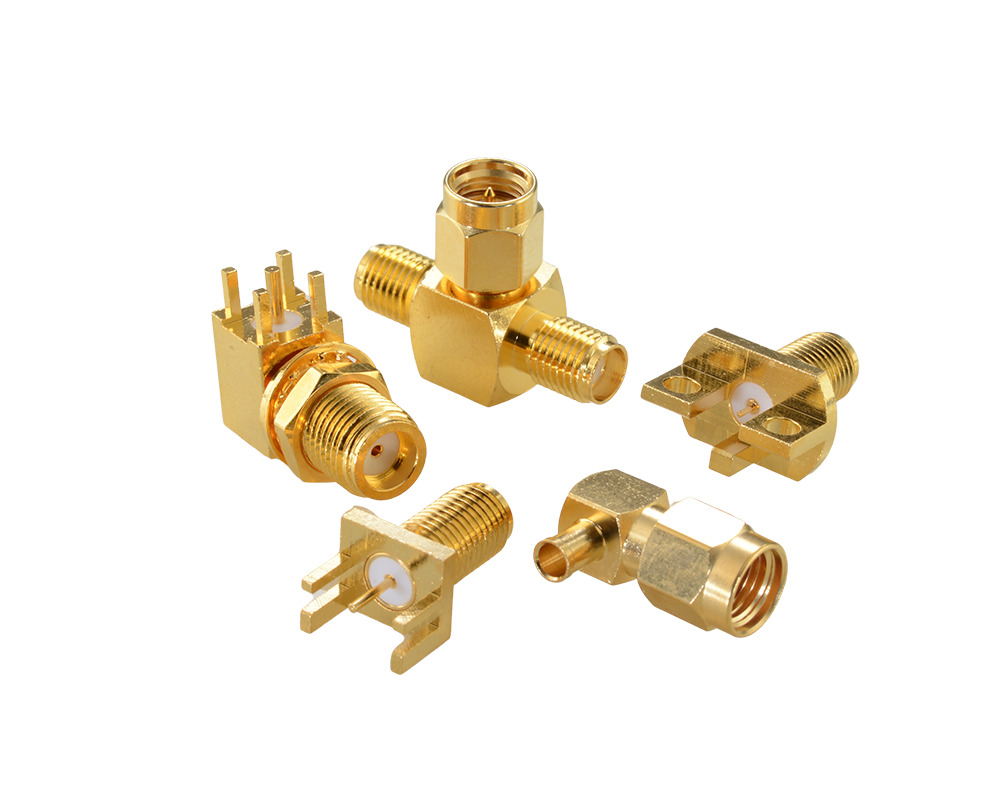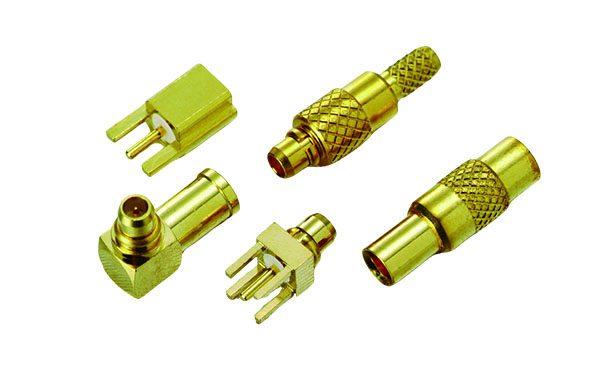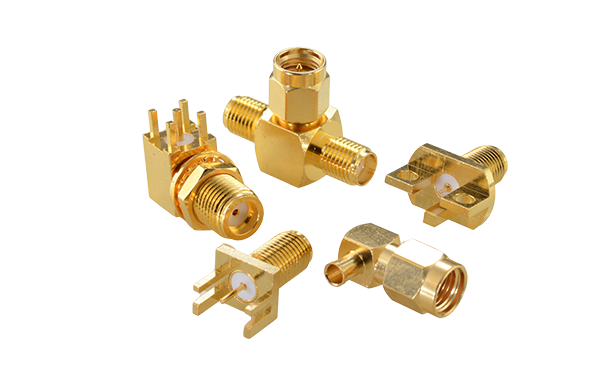- HOME
- Applications
- Blog
- High Performance Female SMA Connector: What You Need to Know!
High Performance Female SMA Connector: What You Need to Know!
25-04-30
In modern electronic equipment, choosing the right female SMA Connector is critical to signal stability and equipment life. Especially when the equipment needs to handle high frequency signals or faces harsh operating environments, choosing a high performance female SMA connector can significantly minimize signal loss and prolong the life of the equipment. In this article, we will introduce the basic concepts, types and performance of female SMA connector, the difference between female SMA connector and male SMA connector, as well as how to choose a quality manufacturer to help you make a more informed choice.
〈Extended reading: What are RF Connectors?〉
What is the Female SMA Connector?
The female SMA connector is a high frequency coaxial connector designed for high frequency signal transmission, which is commonly used in wireless communications, radio frequency (RF) equipment, instruments and antennas. It ensures stable signal transmission and low insertion loss, and is widely used in applications that require precise and high performance signal transmission.
〈Extended reading: How Male SMA Connectors Drive Innovation in Global Tech?〉
Basic Concepts of the Female SMA Connector
The female SMA connector is a small coaxial connector designed for high frequency signal transmission. It is part of the SMA connector series and features precision construction and stable electrical performance. Commonly used in wireless communications, radio frequency (RF) applications, antenna systems, measurement instruments, etc. The female SMA connector excels in signal transfer, insertion loss, and stability, especially in applications requiring high frequency and high accuracy.
The female SMA connector is designed to provide stable signal transmission by connecting the cable to a metal contact based on its internal structure. The principle of operation of the female SMA connector consists of the following:
-
Threaded connection: The female SMA connector is mechanically connected to the SMA interface by means of a threaded structure. It is available in two types, internal and external thread, and ensures a firm and reliable connection by twisting the rotating body to the corresponding SMA interface.
-
Electrical Connection: The female SMA connector is electrically connected to the SMA interface through the internal center pin and the outer body to ensure signal transmission quality and stability.
-
Impedance Matching: In RF systems, impedance matching is critical to signal transmission and performance. The design of the female SMA connector helps to achieve proper impedance matching.
Features of SMA Connector
The features of female SMA connector are as follow:
-
Connection: The female SMA connector has an internal socket that forms a stable electrical connection when connected to the male SMA connector. This design helps to ensure stable signal transmission and low insertion loss.
-
Low Insertion Loss: The female SMA connector is designed to minimize insertion loss, which is the attenuation of the signal during transmission. This is due to the use of high quality materials (such as beryllium copper alloy, gold plating or other special treatment materials), as well as precise process control, resulting in lower contact resistance, thereby reducing signal loss.
-
High Frequency Stability: The design of the female SMA connector is able to maintain stable electrical performance at high frequencies (typically up to 18 GHz or higher). The high frequency stability of the female SMA connector is mainly because of its precision construction and excellent material selection, which enables it to avoid signal loss and interference during high frequency signal transmission.
-
Environmental Durability: The female SMA connector usually has excellent environmental durability, which can cope with various harsh environments (e.g. high temperature, corrosion, etc.) and maintain long term stable operation. This is achieved by selecting high quality metal materials and precise plating treatment.
Electrical Characteristics of Female SMA Connector
The female SMA connector plays a key role in RF and microwave applications, providing stable signal transmission and excellent electrical performance. Below are the detailed electrical characteristics of the female SMA connector:
-
Frequency Range: Standard frequency range is DC to18 GHz. The working frequency for high performance SMA connector is up to 26.5 GHz. It is suitable for Wi-Fi 6E, 5G base station, high frequency radar, satellite communication and millimeter wave (mmWave) applications.
-
Impedance Matching: The standard impedance is 50Ω (ohm), which can ensure the impedance matching with RF system and reduce signal reflection and power loss.
-
Insertion Loss: Low insertion loss ensures low attenuation characteristics during signal transmission.
-
Isolation & Return Loss: The standard return loss of≥ 20 dB effectively reduces reflected signals and improves the overall efficiency and stability of the system.
〈Extended reading: How to Choose the Right RF Adapter? Specifications, Applications, and Selection Guide〉
Female SMA Connector V.S. Male SMA Connector
The design differences between the female SMA connector and the male SMA connector are primarily in the type of interface, mounting, form factor, use, and application, etc. The female SMA connector has an internal receptacle that accepts the pins of the male SMA connector. It is typically mounted on the device port. The male SMA connector has outer pins. It is installed on the cable end or as a signal output. The two are designed to work together to achieve efficient signal transfer and ensure good contact performance and stability. The differences between the female SMA connector and the male SMA connector are listed below.
〈Extended reading: RF Coaxial Connector: A Key Component for Optimizing Microwave Communications〉
Comparison table of SMA female connector and SMA male connector
|
Comparison |
Female SMA Connector |
Male SMA Connector |
|---|---|---|
|
Interface Type |
Internal socket design to accept pin type male SMA Connector. |
Outer pin design for insert into female SMA connector. |
|
Installation |
Mounted on a device port or board as a receiving end. | Installation on the cable end or device end as a signal output. |
|
Threaded Design |
External threaded design for internal screwing with male SMA Connector. | Internal threaded design for external screwing with female SMA connector. |
|
Outer Structure |
Recessed design with space to accept male SMA connector pins. | Convex design with protruding pins for insert into female SMA connector. |
|
Uses and Applications |
Usually used as a receiver, fixed on the equipment port, suitable for wireless equipment, test equipment, etc. | Typically used as an output, mounted on the end of a cable or connected to other equipment. |
|
Contact Surface Design |
Internal metal contact surface with male SMA connector pins. | The pin section is used to contact the internal contacts of the female SMA connector. |
|
Durability and Connection Stability |
Internal structures need to maintain stable contact to minimize signal loss. | The pin design must maintain good contact to ensure stable signal transmission. |
How to Choose a Quality Female SMA Connector Manufacturer?
Choosing a female SMA connector is not only enhances the performance of your equipment, but also improves the stability and extends the life of your system. Choosing the right manufacturer to ensure that you get a product that meets all requirements will play a vital role.
〈Extended reading: How to Choose RF Blind Mating Connectors?〉
Qualifying Certificates
Choosing a manufacturer with international standard certificates can guarantee the products supplied meet the quality requirements. The following are the basic certification standards:
-
ISO 9001 Certification: This is a quality management system certification that proves the manufacturer has standardized quality control processes and can continuously provide products that meet the standards.
-
RoHS certification: Compliance with the EU directive means that the product does not contain harmful substances and meets the requirements of environmental protection.
-
These certifications are not only ensure the quality of the product, but also enhance the trust in the manufacturer and guarantee the safety and stability of the connector in use.
Expertise
It is important to select a manufacturer with the technical expertise to help you ensure that the female SMA connector you select will meet the needs of your application. Here are a few things to keep in mind:
-
Customized Design Capability: Some applications may require customized female SMA connector, such as special material treatment, different frequency range requirements, etc. Choosing a manufacturer with customized design capability can provide more precise solutions.
-
Technical support: Professional vendors can usually provide technical consulting services to assist you in selecting the appropriate specifications and answer technical questions you may encounter during installation or application.
-
Innovation: High performance connectors often require advanced technology to cope with higher frequency and power requirements, and choosing a manufacturer with continuous technological innovation can ensure product leadership.
-
Specification requirements
〈Extended reading: The Ultimate Guide to SMA Plug Connector Types and Specifications〉
Selection of the appropriate Female SMA Connector needs to be based on the specific needs of the application. Consider the following specifications
-
Frequency Range: Depending on your application requirements, choose a connector that can meet the requirements of high frequency transmission. Female SMA Connector can usually support higher frequency (e.g. DC-18GHz and above) signal transmission.
-
Insertion Loss: The female SMA connector has low insertion loss, which reduces signal attenuation and ensures stable signal transmission.
-
Environmental Durability: Select the appropriate temperature, pressure and corrosion resistance according to the usage environment. Some female SMA connector will have enhanced weather resistance for extreme environments.
-
Material and Surface Treatment: Select the use of high conductive materials (such as beryllium copper alloy or gold-plated) treated connectors, can effectively improve the contact performance and reduce electrical losses.
〈Extended reading: SMA to K Connector Explained as the Key RF Component for High Frequency Technology〉
Supplier reputation
Choosing a manufacturer with a good reputation in the market is the key to ensuring product stability. You can evaluate the reputation of the manufacturer through the following ways:
-
User Evaluation and Case Study: View other customers' experience or case study to understand the performance of the vendor's products in actual application.
-
Quality of Service: Can the supplier provide quick response and technical support? This will affect the efficiency of solving the problems you encountered in the process of using the product.
-
Delivery Time and Supply Stability: Choosing a reliable supplier will ensure that the products are delivered on time, avoiding delays and guaranteeing a long-term stable supply.
How to Choose the Right Female SMA Connector?
The following factors should be taken into consideration when choosing the right female SMA connector:-
Frequency range: Ensure that the frequency range of the connector meets the application requirements (e.g. DC-18GHz, DC-26.5GHz).
-
Insertion Loss: Low insertion loss ensures signal stability.
-
VSWR: The smaller the reflection loss, the more stable the signal transmission.
-
Material and Plating: Usually beryllium copper or stainless steel plating to enhance electrical conductivity and durability.Applicable Environmental Requirements: Meet the requirements of the application environment, such as high temperature resistance, vibration resistance, corrosion resistance.
Why does the Female SMA Connector use Gold-Plated Contacts?
The female SMA Connector's joints are usually gold plated, the main advantages of which include:
-
Provides excellent conductivity and reduces signal loss.
-
Enhance oxidation and corrosion resistance to prolong service life.
-
Ensure contact stability and minimize contact resistance variation.
How Do I Install the Female SMA Connector?
Note when installing the Female SMA Connector:
-
Ensure that the threads of the connector are clean and that dust or foreign matter does not affect the connection.
-
Use an appropriate torque tool (torque wrench) to tighten the female SMA connector to ensure that it is secure but not over-tightened to avoid damaging the connector.
-
Avoid frequent plugging and unplugging as the mechanical life of the female SMA connector is limited (typically about 500 plugs and unplugs) and overuse may result in performance degradation.
-
Ensure proper impedance matching (50Ω) to minimize signal reflection and loss.
In what applications is the Female SMA Connector suitable?
Due to its excellent electrical characteristics, the Female SMA Connector is commonly used in the following applications:
-
5G wireless Communication: Base Station, Antenna System
-
Precision Testing and Measuring Instruments: Network Analyzers, Spectrum Analyzers
-
Aerospace and Defense Industry: Radar, Satellite Communication
-
High Frequency RF Equipment: Microwave Modules, Millimeter Wave Application
How Do I Ensure the Environmental Durability of the Female SMA Connector?
To ensure the long term reliability of the Female SMA connector, the following measures can be taken:
-
Use suitable storage method: avoid humid environment and prevent metal oxidation.
-
Proper Installation and Removal: Use a torque wrench to tighten to avoid over-tightening and damaging the connector.
-
Select a Quality Manufacturer: Ensure that you purchase a connector that meets MIL-STD or ISO certification to ensure quality stability.
Conclusion
The female SMA connector is an indispensable connecting element in high frequency RF system, which has the advantages of low loss, high stability and high frequency transmission capability, and is widely used in the fields of 5G, radar, satellite communication and precision test equipment. When purchasing, factors such as frequency range, impedance matching, material and durability should be considered to ensure the best signal transmission. If you are looking for a female SMA connector the Huang Liang Technologies is a professional manufacturer of RF microwave connectors and offers a wide range of RF connectors. If you would like to know more about our products, please contact us .
〈Extended reading: What is an N Connector and How Does It Work? 〉




